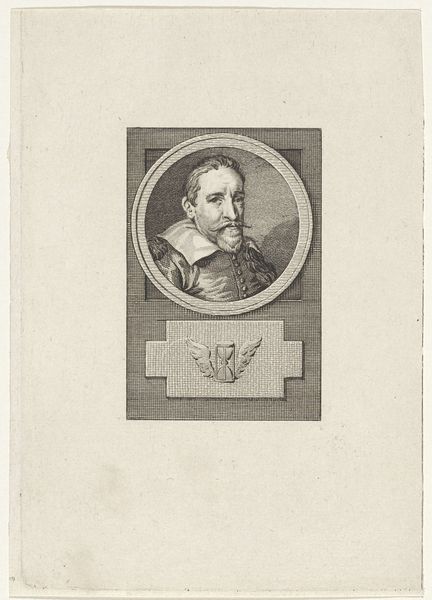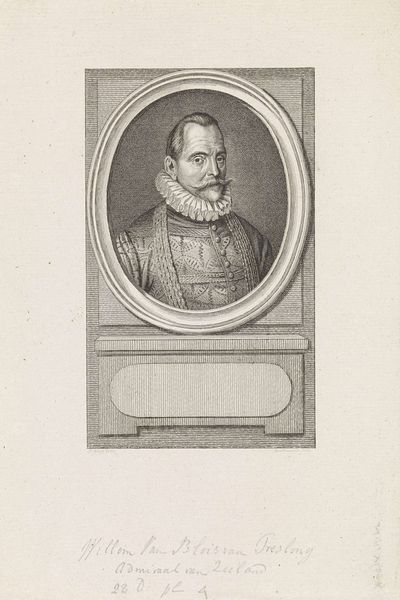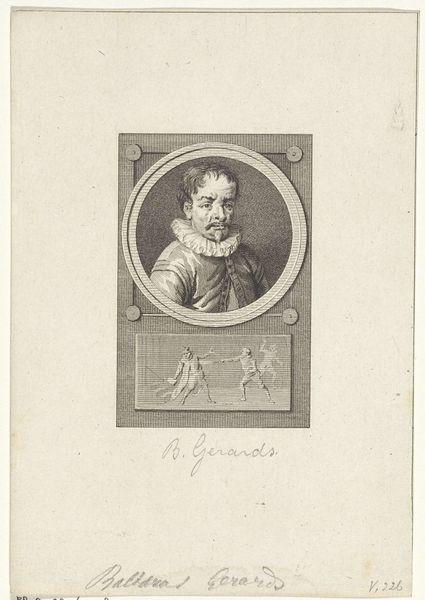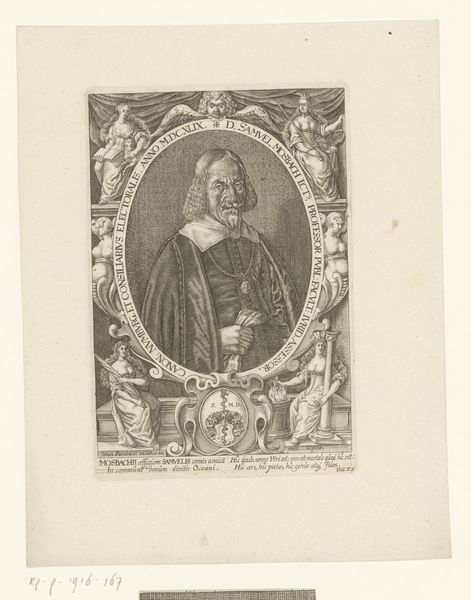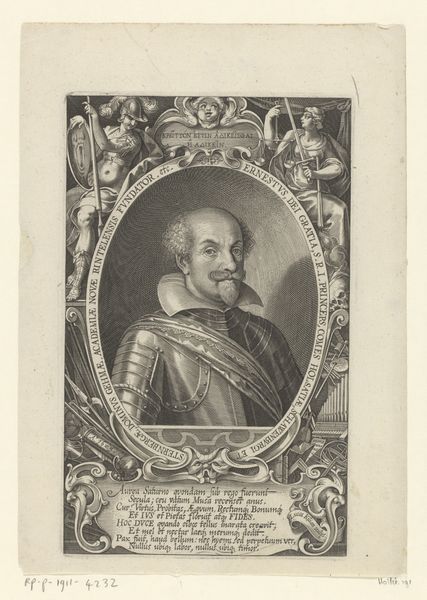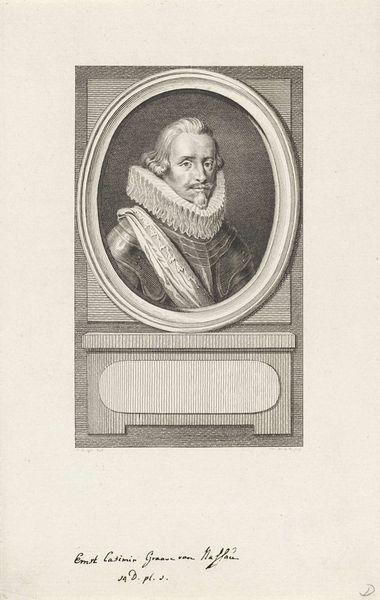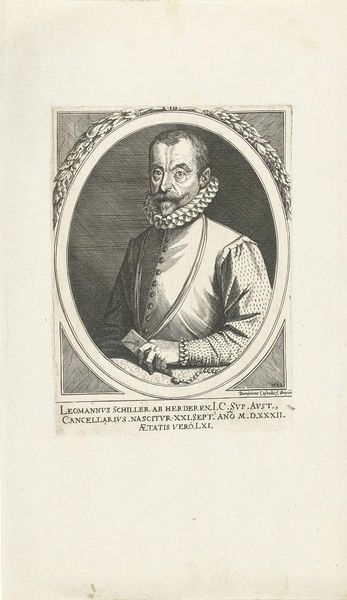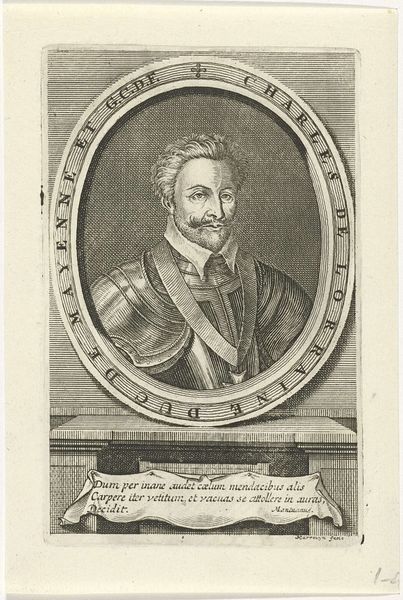
print, engraving
#
portrait
#
baroque
# print
#
old engraving style
#
figuration
#
line
#
history-painting
#
engraving
Dimensions: height 174 mm, width 121 mm
Copyright: Rijks Museum: Open Domain
Editor: Here we have Pieter de Jode II's "Portret van Ferdinand van Beieren," a print dating from around 1628 to 1670. The meticulous detail and somewhat severe expression give it a formal, imposing feel. What do you see in this piece, especially given its historical context? Curator: The severity you noticed isn’t accidental. The visual language here is rooted in the projection of power. The ornate armor, the stiff ruff—these aren’t just fashion statements; they’re loaded with cultural meaning. Consider the oval frame itself: an enclosure that both protects and presents him, almost like a sacred icon. Ferdinand's gaze meets ours, directly, asserting authority and demanding respect. Do you notice anything else in the portrait’s symbolic weight? Editor: The inscription beneath the portrait, could that also add to the feeling of authority? Curator: Absolutely! The inscription explicitly states Ferdinand’s titles: Count Palatine and Duke of Bavaria. Language and image combine to solidify his position. Think about the psychology of portraiture at the time; these weren’t casual snapshots. They were carefully constructed representations designed to influence perceptions of the subject and reinforce dynasty. And what impact does that meticulous detail have, rendering him in a timeless way? Editor: It's like he's meant to be remembered this way, a carefully crafted image for posterity. So much meaning packed into seemingly simple choices! Curator: Precisely! The enduring power of symbols, isn't it fascinating? A single image carrying generations of meaning. Editor: It really is. I’ll never look at a portrait the same way again.
Comments
No comments
Be the first to comment and join the conversation on the ultimate creative platform.

